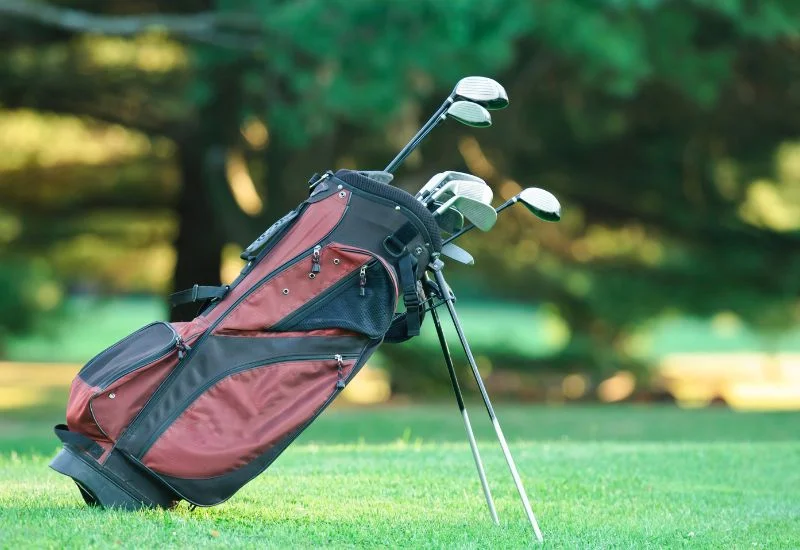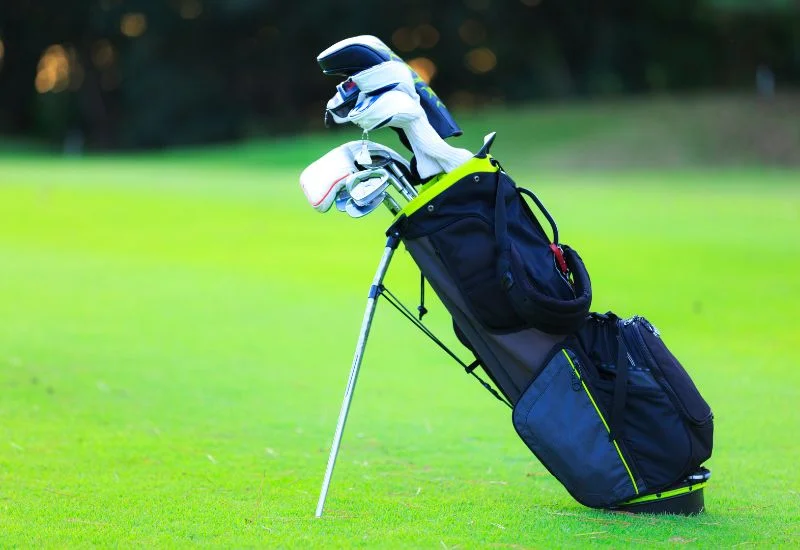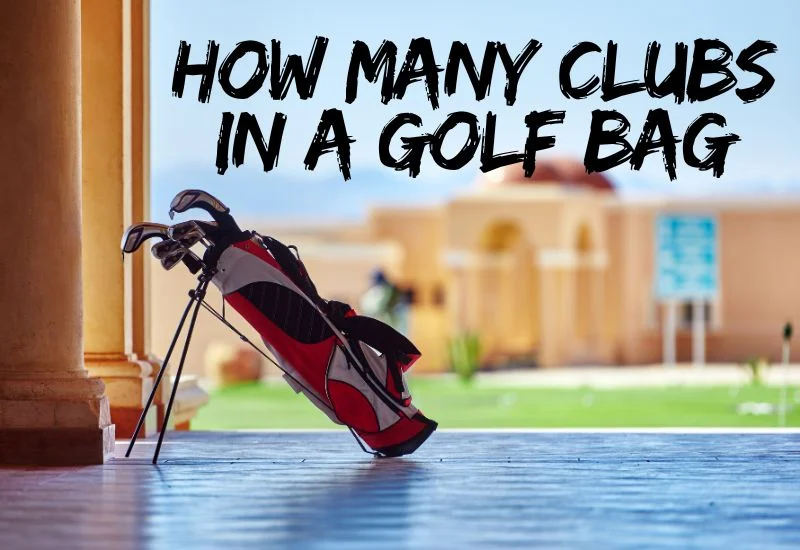
Edited by Abdullah Faraz on July 24, 2024
Golfers frequently end up with a lot of penalties. They are not aware of the rules of golf. Moreover, they don’t know the official limits of golf clubs assigned by golf associations.
During the game, golfers shot from different distances, and they need a variety of golf clubs. A proper golf club setup has all the clubs that can be shot from different positions. However, most beginners can’t make a proper golf club setup. This results in short in specific clubs during the game.
First of all, have a deep knowledge of the rules of golf. Then, learn about the features and uses of the clubs. In the following blog post, you will learn about the maximum limit of golf clubs, the proper setup of the clubs, the features of the clubs, and their uses.
Understanding The Rules

Golf comes with several complicated rules that, if overlooked, can cause penalties. The USGA (United States Golf Association) and R&A (The Royal and Golf Club of St Andrews) are governing bodies for golf that devise rules.
According to Rule No. 4, the official maximum number of golf clubs is 14 during a round. Following is the ideal variety of clubs.
- One Putter
- One Driver
- Woods including 5-Wood, and 7-Wood
- Eight Irons
- Two clubs of your preference
The Reason For This Limit
The President of USGA, John Jackson proposed this maximum limit of 14 clubs in 1936. He made the decision to set this limit after discussions with Bobby Jones and Tony Torrance. Before this meeting, Bobby Jones had carried only 12 clubs in the Walker Cup 1936, and Tony had carried 16 clubs in a match and they had performed well. So they all agreed on 14.1
Moreover, the limit of 14 seems suitable for the steel-shafted irons. George Nicoll of Leven introduced this matching set of nine clubs in Scotland. Additionally, players must have wood clubs and putters along with this set of nine clubs.
The Importance Of The Putter
For short-distance and low-speed strokes, they developed a specific golf club named a putter. Its head is flat, and its face is low striking. Moreover, its shafts are bent, and the grips are non-circular.
It requires a lot of precision and skill set to put the golf ball in the golf cup. These clubs are bounce-less and gliding. The loft of the face is at 5 to 6 degrees not completely vertical over the ground.
Initially, putters were made from the woods of beech, ash, and hazel, but after the 1900s, the heads of putters were made from Iron. Then, in 1959, to lower the center of gravity in the head, it was made a little shorter, thicker, and curved from front to rear. After this modification, they called it a Hot Dog Putter. Later, the metal at the face was changed with a polymer compound to make it a sweet spot.
There are several types of putters varying in length and other features.
- Long-shaft putters come in 32 to 35 inches length.
- Belly putters 38 to 40 inches in length.
- Fetch Mallet putter comes in 33, 34, and 35 inches in length.
Penalty For Carrying Too Many Clubs

Penalty will differ with the game type. Moreover, the timing of penalty also varies. In stroke play, they will penalize after the hole you have just completed. While in match play, they will apply a penalty to the match score.
Penalty For Breach Of Rule In Matchplay
In match play, rules officials will adjust holes if they get a penalty. If you take more than 14 clubs, there will be a deduction of one hole for each hole you played at the end of the game. However, they can deduct only two holes in the whole round.
Penalty For Breach Of Rule In Stroke Play
In stroke play, there will be an addition of two strokes for each hole. However, a penalty of a maximum of four strokes is allowed in a round.
What To Do With Clubs Above 14?
According to Rule 4.1c, you have to take a clear-cut action.
Mention these extra clubs to your opponent, marker, or other player in the group. Then, you can turn these clubs upside down in your golf bag. However, you can give these extra golf clubs to your friends.
This can save you from a penalty, but if you deliberately bring more than 14, they will definitely penalize you. That’s why you should leave extra golf equipment behind.
Common Mistakes When Selecting Golf Clubs

Ignoring Fit
First and the foremost mistake is to ignore your body, height, and stature while selecting a club. Your height will directly influence the swing, the height of the trajectory, the distance it will cover, and many other things. Therefore take an expert opinion about your fit and then select the suitable club for you.
- For the height of 5′ 2 inches to 5′ 3 inches, one inch less than the standard length club of 38 inches is suitable.
- For 5 ‘7 inches to 6’ 0 inches in height, a standard length club of 38 inches is suitable.
- However, for people with 6′ 4 or 6′ 5 inches height, the club length of 39 inches is suitable.
Moreover, you should have some knowledge about which type of head is best for your shots and which grip will make the best shots.
Overlooking Skill Level
Everyone likes the clubs of their favorite players. But they are pro players. To select clubs like them, you have to develop a skill set.
Therefore, select the club type according to your skill level, your body shape, and your preferences. Moreover, you can consult an expert or a local fitter for the most suitable tools for your game.
Excessive Focus on Brand
Most beginners run behind the expensive and famous brands while ignoring the features of the clubs. These clubs can’t score if you are not a competent and efficient ball striker. Moreover, don’t focus on the shining blades and the attractive looks of the clubs.
There are different standards of length and loft angles for different brands. So consider the standard which is consistent with your body fit and ease.
Neglecting the Importance of the Shaft
Another common mistake is neglecting the features of the shaft that are suitable for you. They often result in too stiff or too flexible shafts that will ruin their game. The material, weight, and design make it stiff or soft. The following factors will dictate you about the suitable shaft for you.
- Speed of swing
- Force applied to the club
It is the engine of the golf club and directs your energy into the golf ball. The stiff shaft of the club will not allow it to flex while a flexible shaft will result in an unpredictable direction.
Skipping the Putter
A putter is specialized for rolling the ball into the hole from a small distance. Its flat face with a small loft angle of 5-6 degrees makes it fit for putting.
However, many players don’t pick this club along with them. Putter gives you an edge, and you will feel resourceful on the golf course.
Ignoring Course and Playing Conditions
There are several conditions of the golf course that vary from ground to ground. The most important of them includes the given below.
- Course length
- Hazards of the course
- Wind speed and direction
- Roughness of the ground
Different clubs can perform well in different conditions. Or even several golf clubs are specialized for certain course conditions. Therefore, when going for a golf competition, consider the course conditions first and then equip yourself with suitable golf clubs.
Failure to Update Old Clubs
A golf player uses the drivers frequently, and they lose the accuracy of shot height and distance with the passage of time. So, after almost 150 rounds, you should update your drivers.
However, according to an estimate, irons can last for around 300 rounds. Moreover, woods can perform well for a range of 150 to 200 rounds. The shaft of the woods will break due to the frequent use. Due to the small tear and wear, putters have the highest lasting age. You can update them after 15-20 years.
You should keep updating your clubs as it will improve your performance and will produce your desired spin in the golf ball.
Using Your Playing Partner’s Golf Clubs

Using a golf club from your playing partner shows that you are non-serious about your game. This will affect your performance and confidence.
Every player should tailor a specialized set of clubs according to their body fit, course conditions, and ease.
Minimum Number of Clubs You Can Carry
There is a limit for the maximum number of golf clubs, but you will not find a minimum number for clubs. However, there is a golf club set designed for a proper golf game. The golf set for a game must have the following types of golf clubs
- Driver
- Fairway woods
- Irons
- Pitching and sand wedges
- Putter
- Hybrid
The number of clubs varies according to personal preferences, but an ideal set must have these types of clubs.
Essential Clubs to Carry
Driver
Golfers use drivers to shoot at the longest distances. They have a specifically designed head and shaft for hitting the ball for distant horizons. These golf clubs come with the following features.
- Loft angle of 8 to 15 degrees
- Shaft length of 44 to 46 inches
- Head size of 460 cc
Drivers are made up of thin titanium, which makes them the most expensive among golf clubs.
Fairway Woods
Fairway woods come with large club heads and long shafts. These clubs make shots of high speed and long distances. Due to the extra loft angle, their shots will produce more backspin in the balls.
- The loft angle of fairway woods is between 14 and 27 degrees
- Shaft length varies between 41.25 to 43.25 inches
- Head size lies between 130cc to 170 cc
Manufacturers used Hardwood to make them in the past but now steel alloy, carbon fiber or titanium is used to make them.
Irons
This type of golf club comes with smaller heads and shorter shafts than the woods. These have flat and thin clubheads also called blades.
Numbered Iron
The Irons have labeled numbers ranging from 0 to 12. The numbers indicate regular increase in loft angle and distance. But the modern iron clubs have sets with 3 to 9.
The Iron with 1 has the lowest loft and longest shaft. While the 9-Iron will have the highest loft angle to cover the shortest distance.
Driving Irons
The 1 Iron is called a driving Iron. It has the smallest loft angle but the longest Iron length. This is the most difficult Iron to use due to its small surface area. That’s why it is obsolete or very rare to use.
- The loft angle of the Driving Iron is 17 to 25 degrees
- The length of the shaft is between 38.5 to 39.5 inches
- The head size of Driving Irons lies in the 150cc to 200cc range.
Long Irons
The 2 to 4-numbered Irons are called Long Irons. Their heads are small, the loft angle is the lowest, and the shaft length is the longest. That makes them harder to use for a beginner.
- The loft angle is from 17 to 24 degrees
- Shaft length is from 38 to 39 inches
- Head size is 150cc to 200cc
Mid Irons
The Irons numbered from 5 to 7 are Mid Irons. These Irons can shoot between 130 to 210 yards. Golfers use this Iron for their second shot, which requires a shorter distance. These have greater loft angles for higher flight of golf balls. The recommended Irons for amateur golfers are Mid Irons to learn the game.
- Loft angle lies between 22 to 35 degrees
- Shaft length ranges from 37 to 38 inches
- Head size is between 200cc to 250cc
Short Irons
8-9 numbered Irons are called Short Irons due to their shortest shafts. However, they have the highest mass heads. They can shoot the golf ball at a distance between 130 to 150 yards. These are the easiest and most commonly used Irons.
Short Irons produce the most accurate results, so are called scoring clubs. These clubs produce the highest spin due to the higher loft angle.
- Loft angle is between 32 to 47 degrees
- Length lies between 35.75 to 36.5 inches
- Head size is about 100cc to 150cc
Wedges
The loft angle of Wedges starts from the highest angle of Irons. That’s why these are called a subclass of Irons. They produce a greater backspin of balls to have a high but short trajectory. This will save the ball from hazards such as sand, trees, bumps etc and let the ball roll even after landing.
- Loft angle ranges from 42 to 64 degrees
- Shaft length is between 35.75 to 35 inches
- Head size lies 90cc to 120 cc
Wedges have further types depending upon the loft angles.
- The pitching wedge comes with the lowest loft angle of 50-52 degrees among the wedges.
- A gap wedge has a loft greater than the loft of a Pitching wedge and smaller than a Sand wedge.
- The sand wedge has a loft angle of 54-56 degrees.
- The Lob wedge has the highest loft angle of 58-60 degrees among the wedges.
Putter
The club that roll the ball into the hole is called Putter. The Putters have a thin head known as a blade. You will find Blade and Mallet style Putters, Toe-weighted Putters, and Face-balanced Putters in this category.
- Loft angle 2 to 6 degrees
- Length ranges from 32 to 35 inches
- Head size is between 300cc and 500cc
Hybrids
Hybrids come with both the features of Irons and Woods. These are made up of hollow steel or titanium. The face of Hybrid clubs is convex, and the head is shallow. Hybrids have greater loft angles than the angles of both the Woods and Irons.
Hybrids are the direct replacement of Irons and Woods when dealing with rough and difficult trajectories. Usually, golfers use 3, 4, and 5 Hybrid clubs.
- Loft angle of 18 to 27 degrees
- Shaft length of 39 to 40.5 inches
- Head size between 100cc to 150cc
Optional Clubs To Consider
You will find several other types of clubs that can replace the above-mentioned clubs.
Additional Wedges
As wedges are further divided into gap wedges, utility wedges, or multiple wedges. You can carry any of them for more precise shots.
Utility Clubs
Utility clubs are called so as they are the versions of several club types. Sometimes hybrid clubs can confuse you with utility clubs. One very famous utility club is known as Chipper.
Extra Woods
Extra woods can replace the long irons for longer distances.
What to Leave Behind
When you have all types of clubs in bulk, this will confuse you about what to carry and what to leave behind. You can leave the following clubs behind.
Long Irons
You can replace the long irons with hybrids and fairway woods and leave them at home.
Duplicate Clubs
The clubs with similar features are just an extra weight for you. Some clubs have the same loft angle, such as 3-wood and 5-wood, so you can carry one of them.
Hybrids vs. Woods
Hybrids come with versatile features, such as a mix of iron and fairway wood. It is longer than irons but shorter than fairway woods. Hybrids produce higher shots than irons but lower than the fairway wood. But hybrids have a left-missing bias.
Woods come with a large head with more forgiveness than hybrids. These produce the shots with highest flights and greatest distances. However, woods are not as versatile as hybrids.
Arranging The Items In A Golf Bag
There are multiple styles of golf bags. Every style varies in the number of compartments and sizes of compartments. However, there is a general arrangement method that is applicable to all golf bags.
Select The Right Golf Bag
Right bag means the bag with all the essential features such as the size, pockets or compartments, and required number of dividers. Your equipment and accessories decide what the right golf bag is for you.
Organize The Clubs
You will find 4-way divider, 6-way divider, and 14-way divider golf bags. You have to organize clubs according to these sections.
Always start from the clubs with the longest shafts to the shortest shafts clubs. Therefore, as the drivers are the longest ones, you will first arrange them, and putters have the smallest lengths; you will arrange them at the last.
If you have a 4-way divider bag, arrange the clubs in the following manner.
- Place the longest clubs, Drivers, and Woods on the top.
- Then put the Longest Irons in the center-left portion, and the mid and short irons in the center-right of the bag’ divider.
- You should place the Wedges and Putters that are shortest in length at the bottom.
Organize The Accessories
Put your outfits, rain gear, and sweaters in the large side pockets. Use a valuables pocket to carry valuable items such as cell phones, wallets, watches, keys, chargers, etc. You can keep your drinks, snacks, water bottles, etc, in the insulated pocket to keep their temperature. If your bag has a pocket for balls and tees, you can utilize it for several items, such as golf balls, tees, ball markers, and divot tools.
Conclusion
There is a limit for maximum clubs but no limit for minimum clubs. The number and type of the clubs you carry in the course matters a lot. Therefore research in detail about the types and functions of the golf clubs. It will definitely have a positive impact on the game. But make sure to have a diversified type of club in your set.
Frequently Asked Questions
Article Sources
Bagsbucks provides reliable information with good-quality references to support the facts.
